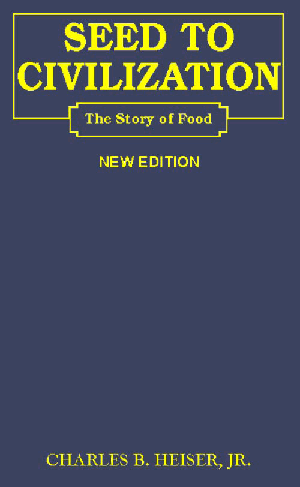Subtotal: 0.0
Seed to Civilization; The story of food
₹2220
Seed to Civilization; The story of food
Preface to the 1990 Edition
This is not a book about hunger. Rather it concerns mostly the plants and animals that stand between us and starvation. The subject can be called ethnobiology, the study of plants and animals in relation to humans. Ecology, the study of organisms in relation to their environment, is another of our concerns. In this case we are the organisms and the part of the environment of interest to us is the plants and animals that provide our food.
In this book I begin with some consideration of the origin of agriculture and why plants and animals were domesticated. The bulk of the book is concerned with basic food plants and animals, and covers where and when they were first domesticated as well as why and how they are used. I have, however, not hesitated to stray from the principal subjects from time to time when I have felt that the digression would be of general interest to my readers. There is, for example, some mention of the uses of plants and animals for purposes other than food. In this edition I have extensively revised several chapters, completely rewritten the last two, and increased the number of plants treated. In addition, I have incorporated some new photographs.
Only one chapter is given to the discussion of animals and its focus is on those most important as food. As I am a botanist, some may think that I have neglected animals in favor of plants, but in defense I can point out that we get all of our carbohydrates and nearly three-fourths of our protein from plant sources. Moreover, nearly all of the food we get from animals is in turn derived from plants. After all, life depends on photosynthesis; chlorophyll has been referred to as the green blood of the earth. The last chapter concerns current and future food problems and, perhaps, some controversial topics ..
The book has been written with the general reader in mind and no particular background in biology should be necessary Jor understanding
most of the topics. I had once assumed that the readers of a book such as this would have an elementary knowledge of human nutrition, but, judging from recent news releases, that assumption was unjustifiable, for malnutrition is not confined to the poor and uneducated but extends to the affluent and "educated" as well. Therefore, a brief treatment of nutrition is given (Chapter 3).
Although I have not tried to include all of my sources, there is a fairly extensive and updated bibliography at the end of the book. This is included primarily for those readers who would like to pursue any subject in greater detail. Although I expect the same plants and animals to continue to serve as our principal foods for a long time to come, our detailed knowledge concerning them will change as research makes more information available. Perhaps this is nowhere more true than in the realm of prehistory, for the next archaeological investigation may uncover new information regarding the "invention" of agriculture and the earliest domesticated plants and animals.
There are a number of individuals to whom I am indebted for their advice. My thanks to all of them, particularly Gregory Anderson, Virginia Flack, Gunder Hefta, Jorge Soria, and my wife, Dorothy. Thanks also to those who supplied the illustrations.
Preface to the 1990 Edition
1. In the Beginning
2. Seeds, Sex, and Sacrifice
3. Eating to Live
4. Meat: The Luxury Food
5. Grasses: The Staff of Life
6. Sugar
7. Legumes: The Meat of the Poor
8. The Starchy Staples
9. Coconut: The Tree of Life
10. Oils: Sunflower and Cotton
11. To Complete the Meal
12. Multiplier of the Harvest
13. Let Them Eat Cake?
Bibliography
Index


Please Login To Write A Review
Login